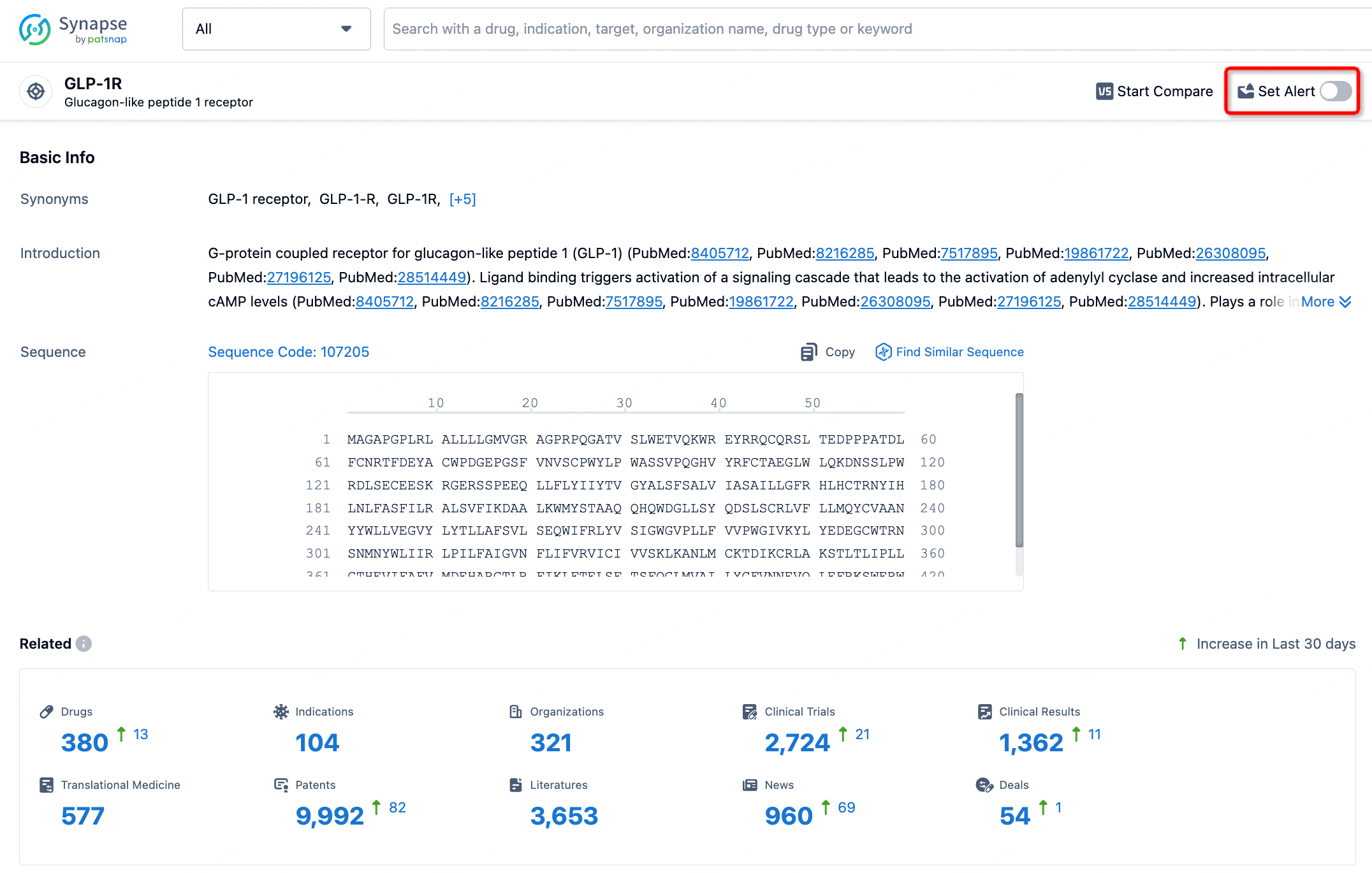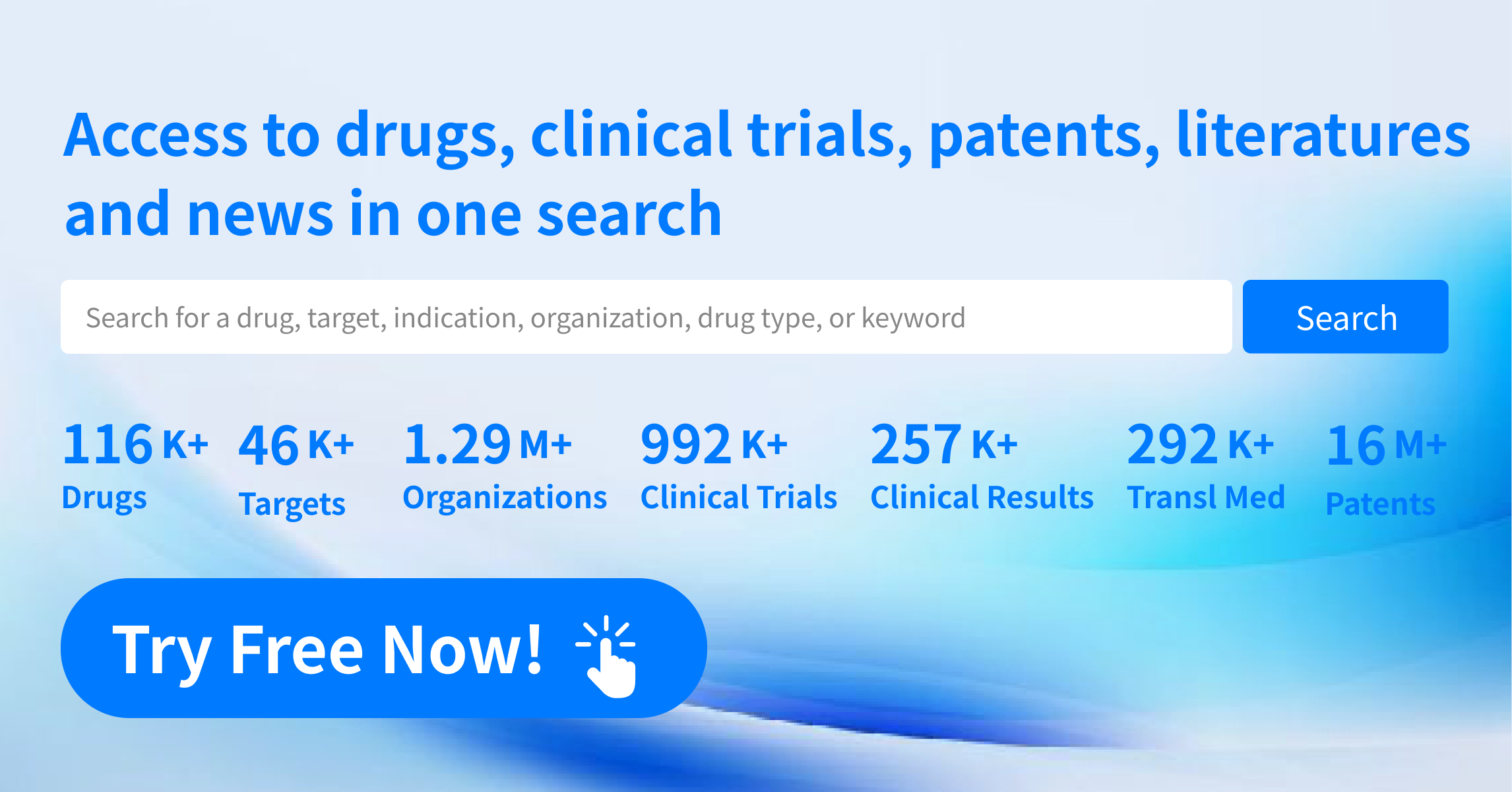Request Demo
What are GP1BA inhibitors and how do they work?
25 June 2024
Introduction to GP1BA inhibitors
GP1BA inhibitors represent a promising class of therapeutic agents that have garnered significant attention in the field of hematology and cardiovascular medicine. Understanding the role of these inhibitors requires a dive into the molecular and cellular mechanisms at play in blood clotting and platelet function. Glycoprotein Ib alpha (GP1BA) is a critical component of the platelet membrane, and its inhibition can have profound effects on thrombosis and hemostasis. This blog post aims to elucidate how GP1BA inhibitors function and explore their potential clinical applications.
How do GP1BA inhibitors work?
GP1BA is a part of the GP1b-IX-V receptor complex found on the surface of platelets, which are small blood cells essential for clot formation. This receptor complex plays a pivotal role in the adhesion of platelets to the subendothelial matrix at sites of vascular injury. The interaction between GP1BA and von Willebrand factor (vWF) is particularly crucial in initiating the platelet adhesion process, especially under high shear stress conditions found in arteries.
GP1BA inhibitors work by blocking this interaction between GP1BA and vWF. This inhibition prevents the initial adhesion of platelets to the site of vascular injury, thereby reducing the formation of a platelet plug. By disrupting this key step in the clotting cascade, GP1BA inhibitors can effectively reduce thrombus (clot) formation. This mechanism is particularly beneficial in preventing pathological thrombosis, a condition where blood clots form unnecessarily and can lead to serious complications like heart attacks and strokes.
One of the primary ways GP1BA inhibitors achieve this is through the use of monoclonal antibodies or small molecule inhibitors that specifically bind to the GP1BA subunit. These inhibitors can either block the binding site directly or induce conformational changes in the GP1BA molecule, rendering it incapable of interacting with vWF. This targeted approach ensures that the inhibition is specific and reduces the likelihood of off-target effects that can occur with more generalized anticoagulant therapies.
What are GP1BA inhibitors used for?
The therapeutic potential of GP1BA inhibitors is vast, particularly in conditions where platelet aggregation and thrombus formation pose significant risks. One of the primary clinical applications being explored is the prevention and treatment of arterial thrombosis. In conditions like myocardial infarction (heart attack) and ischemic stroke, the rapid formation of a thrombus can occlude blood flow to critical tissues, causing significant damage or even death. GP1BA inhibitors, by preventing the initial steps of thrombus formation, offer a targeted means to mitigate these life-threatening events.
Another promising application of GP1BA inhibitors is in the management of thrombotic microangiopathies, such as thrombotic thrombocytopenic purpura (TTP). In TTP, excessive platelet aggregation leads to the formation of microthrombi that can cause widespread organ damage. By inhibiting GP1BA, these therapeutics can reduce the formation of microthrombi and alleviate the symptoms of this severe condition.
Furthermore, GP1BA inhibitors hold potential in improving the outcomes of surgical procedures, particularly those involving cardiovascular interventions. During surgeries such as angioplasty or stent placement, there is a heightened risk of thrombus formation due to vascular injury and the introduction of foreign materials. Using GP1BA inhibitors prophylactically can reduce the risk of perioperative thrombotic events, ensuring better surgical outcomes and patient recovery.
In addition to these clinical applications, ongoing research is investigating the role of GP1BA inhibitors in a variety of other conditions characterized by abnormal platelet aggregation. These include chronic inflammatory conditions, certain cancers, and autoimmune diseases, where platelet activation and aggregation contribute to disease pathology.
In conclusion, GP1BA inhibitors offer a targeted and effective means to control platelet aggregation and thrombus formation. Their ability to specifically disrupt the GP1BA-vWF interaction presents a significant advantage over broader anticoagulant therapies, reducing the risk of bleeding complications. As research continues to unfold, the clinical applications of GP1BA inhibitors are likely to expand, offering new hope for patients with thrombotic disorders and beyond.
GP1BA inhibitors represent a promising class of therapeutic agents that have garnered significant attention in the field of hematology and cardiovascular medicine. Understanding the role of these inhibitors requires a dive into the molecular and cellular mechanisms at play in blood clotting and platelet function. Glycoprotein Ib alpha (GP1BA) is a critical component of the platelet membrane, and its inhibition can have profound effects on thrombosis and hemostasis. This blog post aims to elucidate how GP1BA inhibitors function and explore their potential clinical applications.
How do GP1BA inhibitors work?
GP1BA is a part of the GP1b-IX-V receptor complex found on the surface of platelets, which are small blood cells essential for clot formation. This receptor complex plays a pivotal role in the adhesion of platelets to the subendothelial matrix at sites of vascular injury. The interaction between GP1BA and von Willebrand factor (vWF) is particularly crucial in initiating the platelet adhesion process, especially under high shear stress conditions found in arteries.
GP1BA inhibitors work by blocking this interaction between GP1BA and vWF. This inhibition prevents the initial adhesion of platelets to the site of vascular injury, thereby reducing the formation of a platelet plug. By disrupting this key step in the clotting cascade, GP1BA inhibitors can effectively reduce thrombus (clot) formation. This mechanism is particularly beneficial in preventing pathological thrombosis, a condition where blood clots form unnecessarily and can lead to serious complications like heart attacks and strokes.
One of the primary ways GP1BA inhibitors achieve this is through the use of monoclonal antibodies or small molecule inhibitors that specifically bind to the GP1BA subunit. These inhibitors can either block the binding site directly or induce conformational changes in the GP1BA molecule, rendering it incapable of interacting with vWF. This targeted approach ensures that the inhibition is specific and reduces the likelihood of off-target effects that can occur with more generalized anticoagulant therapies.
What are GP1BA inhibitors used for?
The therapeutic potential of GP1BA inhibitors is vast, particularly in conditions where platelet aggregation and thrombus formation pose significant risks. One of the primary clinical applications being explored is the prevention and treatment of arterial thrombosis. In conditions like myocardial infarction (heart attack) and ischemic stroke, the rapid formation of a thrombus can occlude blood flow to critical tissues, causing significant damage or even death. GP1BA inhibitors, by preventing the initial steps of thrombus formation, offer a targeted means to mitigate these life-threatening events.
Another promising application of GP1BA inhibitors is in the management of thrombotic microangiopathies, such as thrombotic thrombocytopenic purpura (TTP). In TTP, excessive platelet aggregation leads to the formation of microthrombi that can cause widespread organ damage. By inhibiting GP1BA, these therapeutics can reduce the formation of microthrombi and alleviate the symptoms of this severe condition.
Furthermore, GP1BA inhibitors hold potential in improving the outcomes of surgical procedures, particularly those involving cardiovascular interventions. During surgeries such as angioplasty or stent placement, there is a heightened risk of thrombus formation due to vascular injury and the introduction of foreign materials. Using GP1BA inhibitors prophylactically can reduce the risk of perioperative thrombotic events, ensuring better surgical outcomes and patient recovery.
In addition to these clinical applications, ongoing research is investigating the role of GP1BA inhibitors in a variety of other conditions characterized by abnormal platelet aggregation. These include chronic inflammatory conditions, certain cancers, and autoimmune diseases, where platelet activation and aggregation contribute to disease pathology.
In conclusion, GP1BA inhibitors offer a targeted and effective means to control platelet aggregation and thrombus formation. Their ability to specifically disrupt the GP1BA-vWF interaction presents a significant advantage over broader anticoagulant therapies, reducing the risk of bleeding complications. As research continues to unfold, the clinical applications of GP1BA inhibitors are likely to expand, offering new hope for patients with thrombotic disorders and beyond.
How to obtain the latest development progress of all targets?
In the Synapse database, you can stay updated on the latest research and development advances of all targets. This service is accessible anytime and anywhere, with updates available daily or weekly. Use the "Set Alert" function to stay informed. Click on the image below to embark on a brand new journey of drug discovery!
AI Agents Built for Biopharma Breakthroughs
Accelerate discovery. Empower decisions. Transform outcomes.
Get started for free today!
Accelerate Strategic R&D decision making with Synapse, PatSnap’s AI-powered Connected Innovation Intelligence Platform Built for Life Sciences Professionals.
Start your data trial now!
Synapse data is also accessible to external entities via APIs or data packages. Empower better decisions with the latest in pharmaceutical intelligence.


